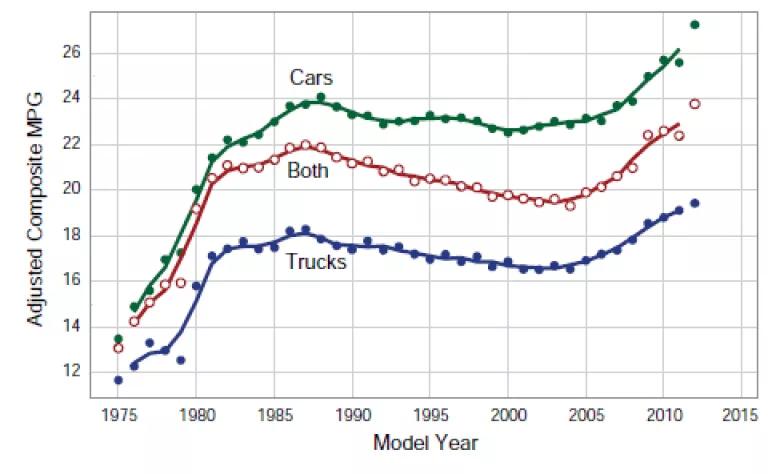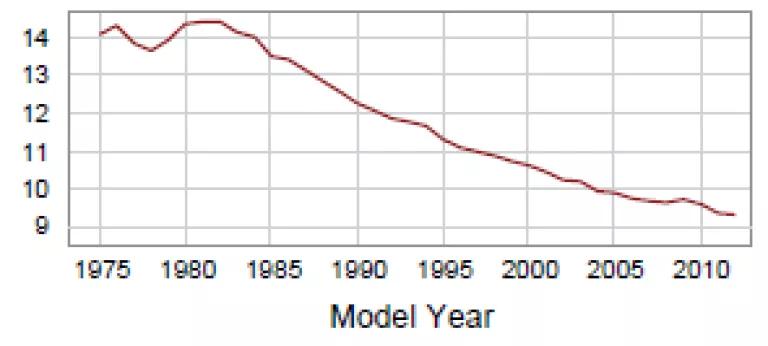New cars and trucks are poised to set new records in fuel efficiency according to the latest Fuel Economy Trends report from the EPA. When all the data is crunched, EPA expects the model year 2012 average to reach 23.8 mpg, a record-high level since the agency started data tracking 1975. Importantly, carbon pollution has also been reduced from new autos, dropping 13 percent from 2007 to 2012.
More good news is the fact that the improvements will continue into the future. As automakers innovate to meet stronger clean car and fuel economy standards that roughly double fuel efficiency by 2025, we can expect more choices for consumers in the showroom and less pain at the pump.
Last December I wrote that 2013 could be another record-breaker for fuel efficiency. Now we have indications that efficiency is indeed surging to new heights this year. Based on calculations by University of Michigan, new cars and trucks sold in February 2013 hit 24.5 mpg.
EPA, which is the official keeper of automotive fuel economy and emissions data for regulatory compliance, gathers automaker submissions and reports automotive efficiency trends annually. The most recent report “Light-Duty Automotive Technology, Carbon Dioxide Emissions, and Fuel Economy Trends: 1975 through 2012” provides a comprehensive history and highlights recent advancements. I’ve captured some below:
We’re on the Right Track
Recent improvements are in stark contrast to past decades (about 1985 to 2005) where fuel economy standards were stagnant.

Credit: EPA Fuel Economy Trends report. “Adjusted Composite MPG” refers to fleet average fuel economy adjusted to reflect real-world driving conditions.
Consumers Have More Choices
As I highlighted in a previous post, the number of fuel efficient vehicles continues to grow each year. EPA finds more fuel-efficient conventional vehicles along with a doubling in the number hybrids since 2007. Of course, 2012 was also a take-off year for plug-in hybrids and pure electric vehicles and now there are over 80,000 of them on the streets. As my colleague Max Baumhefner points out, electric drive vehicles are definitely worth considering on your next trip to the auto showroom.

Credit: EPA Fuel Economy Trends report.
High-Performing Machines Continue to Hit the Road
Among the copious data that EPA tracks are stats on vehicle performance. Below is a graph of 0-60 mph times (in seconds). When I was growing up the cars my parents drove not only guzzled more fuel (and polluted more) than today’s new cars but they were also slower on average. With recent and on-going innovations in engines, electric motors and lightweight materials, automakers are maintaining driver expectations for acceleration while improving efficiency.

Credit: EPA Fuel Economy Trends report.
Overall, the trends show that new cars and trucks are getting better and better, squeezing more from each drop of gasoline. Clean car and fuel economy standards are working to push automotive innnovations and consumers are getting some relief from high and volatile gas prices. Even better, in the coming years, we can look forward to more record-breaking years of high efficiency, less pollution and less oil consumption.




